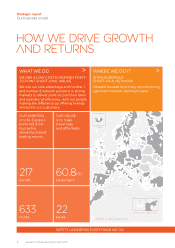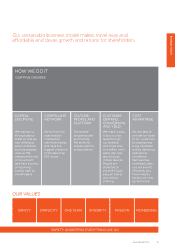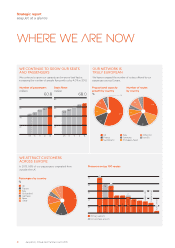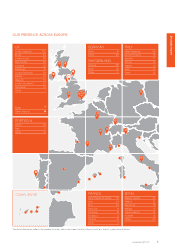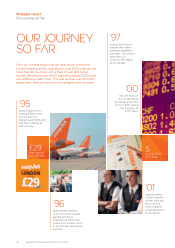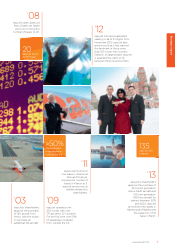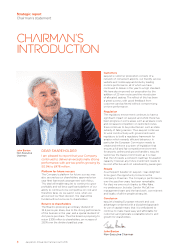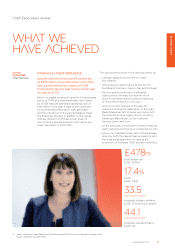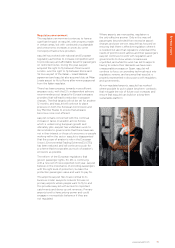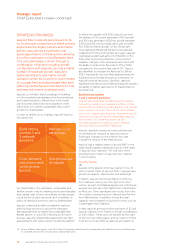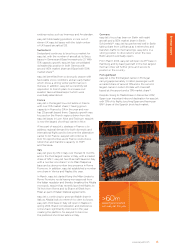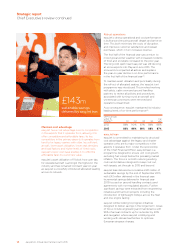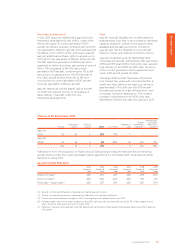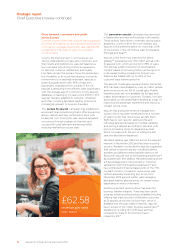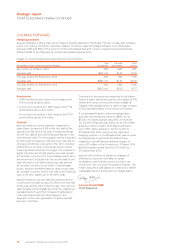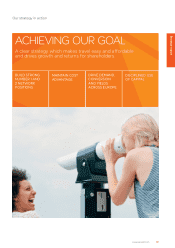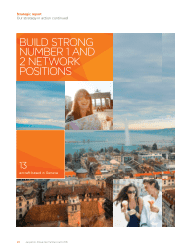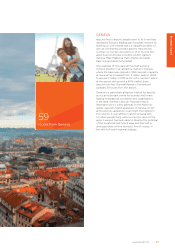EasyJet 2013 Annual Report Download - page 13
Download and view the complete annual report
Please find page 13 of the 2013 EasyJet annual report below. You can navigate through the pages in the report by either clicking on the pages listed below, or by using the keyword search tool below to find specific information within the annual report.
11
www.easyJet.com
Strategic report
Where airports are monopolies, regulation is
the only effective answer. Only in this way will
passengers be protected from excessive airport
charges and poor service. easyJet has focused on
ensuring that there is effective regulation where it
is needed, but also that regulators understand the
needs of point-to-point airlines and their passengers.
easyJet continues to work with regulators and
governments to show where increases are
unjustified, and while this work has led to airports
having to reduce their demands we have seen
unreasonable increases in Spain. easyJet will
continue to focus on providing technical input into
regulatory reviews, and ensuring that easyJet is
properly represented in discussions with regulators
and governments.
At non-regulated airports, easyJet has worked
where possible to put in place long-term contracts
that mitigate the risk of future cost increases and
ensure that easyJet can build on a long-term
sustainable platform.
Regulatory environment
The regulatory environment continues to have a
significant impact on easyJet, with progress made
in certain areas, but with continued unsustainable
and uneconomic increases in prices by some
monopoly infrastructure providers.
easyJet has worked with national and European
regulatory authorities to increase competition and
to provide easy and affordable travel for passengers
on restricted routes. During the year easyJet
acquired the right to fly between Moscow and
London, won the right to fly between Rome and
Tel Aviv as part of the Italian – Israeli bilateral
agreement and easyJet also acquired slots at Milan
Linate airport to fly to Rome after winning approval
from the Italianregulator.
There has been progress towards more efficient
airspace costs, with the EU’s independent advisors
recommending cost targets for Europe’s airspace
providers that will lead to reduction in airspace
charges. The final targets will not be set for another
12 months, and easyJet will continue to place
pressure on both the European Commission and
key Member States to ensure that airspace
becomes more cost efficient.
easyJet remains concerned with the continual
increase in taxes on aviation across Europe,
which is undermining European growth and
ultimately jobs. easyJet has undertaken work to
demonstrate to governments that these taxes are
not in their interest or those of consumers or people
working within the sector. easyJet is disappointed
that the scope of aviation’s role in the European
Union’s Environmental Trading Scheme (EU ETS)
has been reduced, and will continue to push for
a scheme that incorporates as much of aviation’s
emissions as possible.
The reform of the European regulations that
govern passenger rights, EU 261, is continuing,
with a new set of rules expected next year. easyJet
believes in the importance of providing passengers
with the right level of protection, but also the
protection passengers value and want to pay for.
The airports easyJet flies to are central to its
business model. easyJet’s network focuses on
primary airports where people want to fly to and
this provides easyJet with access to important
catchments and drives up unit revenues. Primary
airports tend to have pricing power and could
engage in monopolistic behaviour if they are
not regulated.



